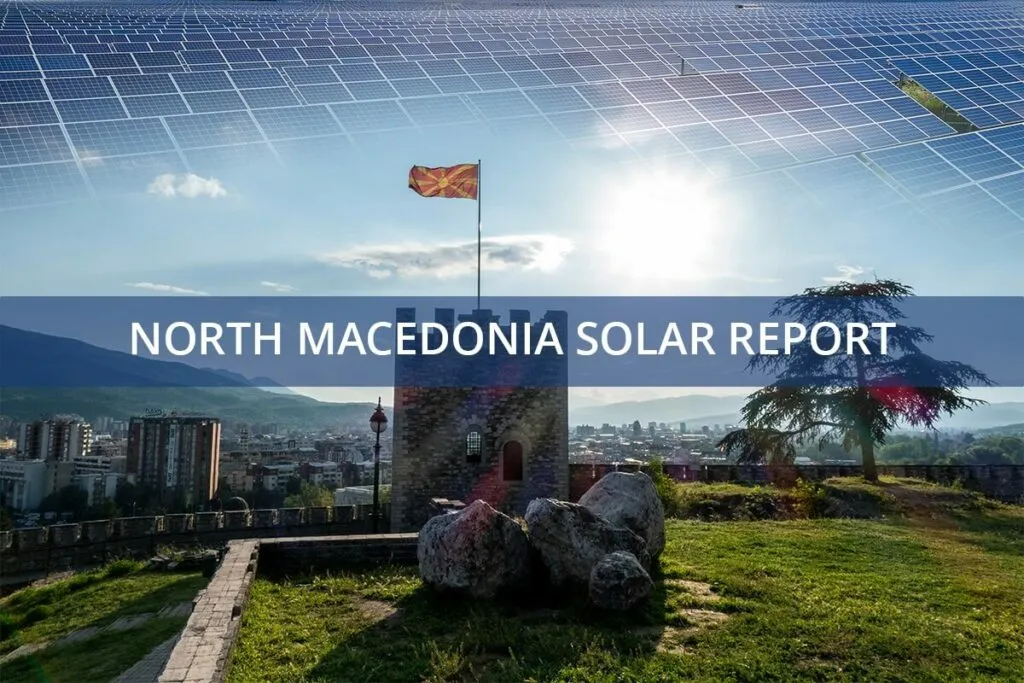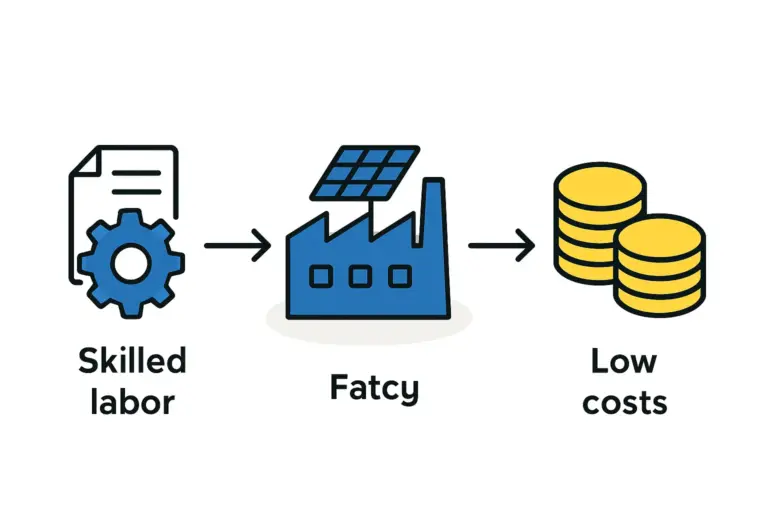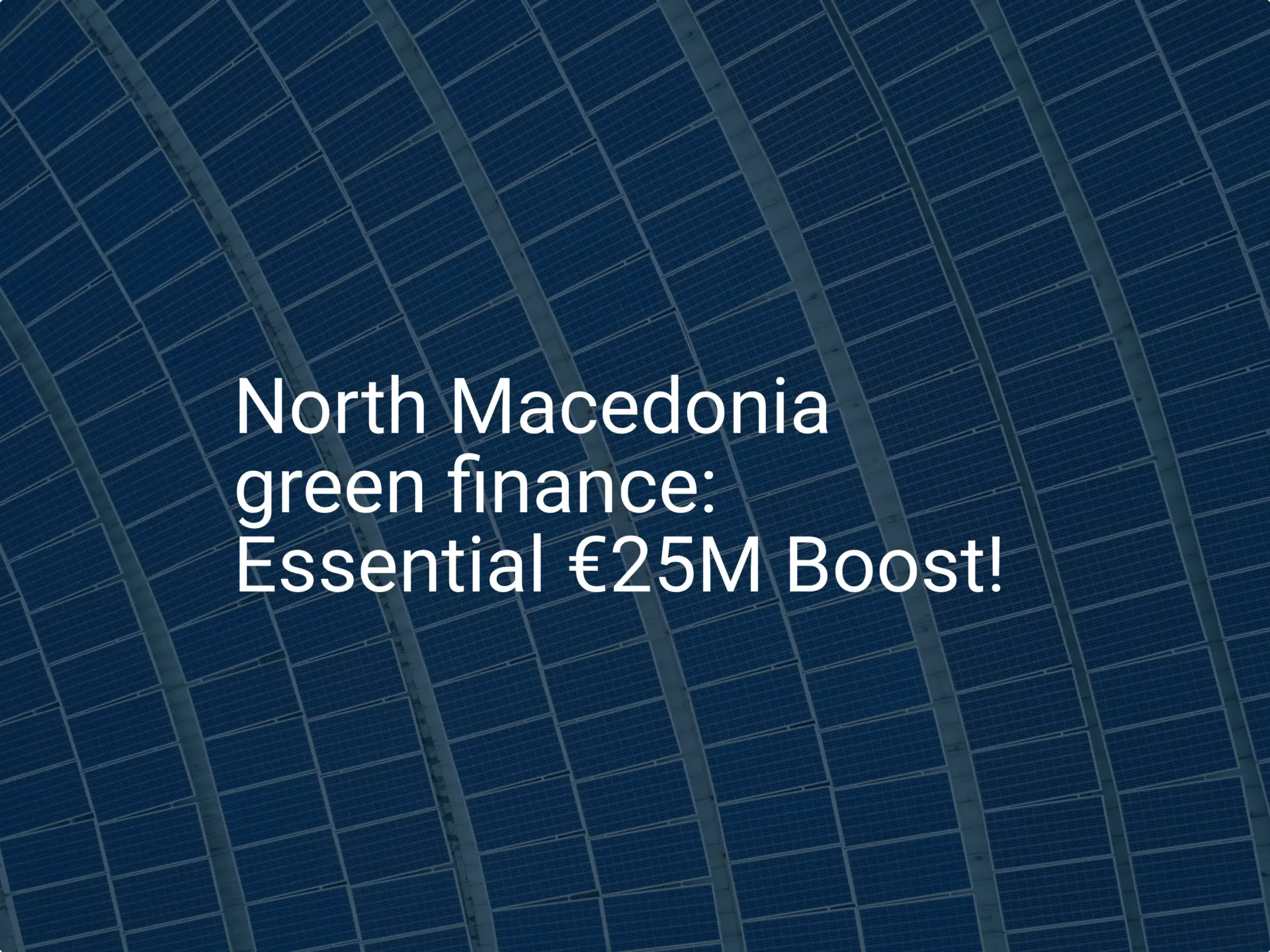Entrepreneurs entering the solar manufacturing sector tend to focus on financing, machinery, and market analysis. While these elements are crucial, the site’s physical infrastructure is a foundational factor often underestimated until it becomes a critical problem.
An investment in a state-of-the-art production line can be quickly undermined by an unstable power grid or inefficient logistical routes. Such an oversight can lead to production halts, damaged equipment, and unforeseen operational costs that erode profitability.
This article uses North Macedonia as a case study to highlight the critical importance of infrastructure. It explores how to assess two vital components—power grid stability and transportation logistics—to ensure a manufacturing venture is built on solid ground. Understanding these factors is essential for anyone looking to start a solar module factory successfully.
The Foundation of Manufacturing: Why Grid and Logistics Matter
Before evaluating specific locations, it’s essential to understand why these two infrastructure pillars are non-negotiable for a solar panel factory.
A solar module production line is a continuous process. An unexpected power outage, even for a few minutes, can halt production, damage sensitive materials like solar cells mid-lamination, and require hours of recalibration for automated machinery. Consistent, high-quality power is not a luxury; it is a prerequisite for operational efficiency and product quality.
Similarly, logistics dictate the flow of your entire business. A factory constantly receives raw materials—glass, aluminum frames, solar cells, and junction boxes—and ships out finished, heavy solar modules.
Poor access to major highways, railways, or ports leads directly to higher transportation costs, longer lead times, and reduced competitiveness. A location that appears cost-effective on paper can become a financial burden if it is logistically isolated.
Assessing Power Grid Stability in North Macedonia
For any investor considering North Macedonia, analyzing the national and local energy grid is a crucial first step. The country presents a complex but promising picture for industrial power users.
The National Energy Landscape
North Macedonia’s energy sector has long relied on domestic lignite coal. However, in line with its EU aspirations, the country has a 10-year Energy Development Strategy focused on transitioning to renewable sources. This strategic shift includes significant investment in solar and wind power, alongside new infrastructure like a natural gas interconnector with Greece.
For a potential investor, this national strategy is a positive sign for the long term. It signals a governmental commitment to modernizing the energy supply, which points toward improved grid stability and a more favorable environment for green industries.

Local Grid Modernization Efforts
More important than national strategy is the reliability of the local distribution network. The national power distribution company, EVN, has been making significant investments to modernize the grid. These efforts include installing smart meters and reconstructing low and medium-voltage networks.
An investor must investigate the specific region’s grid history. Key questions to ask local authorities or utility providers include:
- What is the frequency and duration of power outages in this specific industrial zone over the past 24 months?
- Is the site located near a primary substation, ensuring a more stable power supply?
- What is the capacity of the local grid, and can it support the energy demands of a 25 MW or 50 MW factory without voltage fluctuations?
These are the types of granular details that determine operational success long after the factory is built.
Analyzing Logistical Networks for Manufacturing
North Macedonia’s strategic position in Southeast Europe is one of its most significant assets. Its location at the crossroads of two major Pan-European corridors—Corridor VIII (East-West) and Corridor X (North-South)—makes it a natural hub for regional trade.
Road and Rail Connectivity
The country has invested heavily in its transport infrastructure. The modernization of its primary road and rail networks, particularly along Corridor X, efficiently connects the country to ports in Greece (Thessaloniki) and regional markets throughout the Balkans and Central Europe.
For a solar module manufacturer, this has direct implications:
- Inbound Logistics: Ease of importing raw materials from global suppliers via regional ports.
- Outbound Logistics: Cost-effective distribution of finished modules to customers in the EU and surrounding regions.
Recent railway upgrades, supported by international development banks, further enhance the transport of heavy and bulky goods—a key consideration for solar panels.

The Advantage of Technological Industrial Development Zones (TIDZs)
To simplify the site selection process, North Macedonia has established several Technological Industrial Development Zones (TIDZs). These zones are designed to attract foreign investment by offering pre-vetted, ‘plug-and-play’ environments for industrial operations.
From an infrastructure perspective, TIDZs offer a significant advantage. The government ensures that these zones are equipped with:
- High-Capacity Power Connections: Reliable electricity supply designed for industrial needs.
- Direct Logistical Access: Locations chosen for their proximity to major highways and transport hubs.
- Utility Infrastructure: Pre-installed access to water, gas, and telecommunications.
For an investor without deep local expertise, selecting a site within a TIDZ can substantially de-risk the investment. This approach delegates much of the complex infrastructure due diligence to the state, allowing the investor to focus on core business operations. These zones are developed to meet specific solar factory building requirements, ensuring the land and utilities are fit for purpose.

Frequently Asked Questions (FAQ)
Which is more important: cheap land or superior infrastructure?
While inexpensive land can seem attractive, experienced investors prioritize infrastructure. The recurring costs of production downtime from unstable power or high transport fees from a remote location will almost always outweigh the one-time savings on a land purchase. A proper analysis of the total Cost to Start a Solar Panel Factory must include long-term operational expenditures linked to the site’s location.
How does an unstable power supply affect solar module manufacturing equipment?
Sensitive machinery, such as stringers and laminators, relies on precise electrical inputs. Voltage spikes or drops can damage electronic components, leading to expensive repairs and extended downtime. The consistent operation of automated manufacturing equipment is directly tied to the quality of the power supply.
Can a new factory run entirely on its own solar power installation?
While a factory can and should install a large solar PV system to reduce electricity costs, it is not practical for it to run completely off-grid. Manufacturing requires a stable, 24/7 power source that a solar-and-battery system alone cannot guarantee for heavy industrial loads without prohibitively high investment. A reliable grid connection remains essential.
What are the typical logistical challenges for a new solar factory?
Common challenges include managing the import of fragile materials like solar glass, coordinating ‘just-in-time’ delivery of components to minimize warehousing costs, and arranging specialized transport for finished modules. A location with strong connections to experienced logistics providers is a significant asset.
Conclusion: Building on a Solid Foundation
Deciding where to build a solar module factory is as important as deciding what to build inside it. As the case of North Macedonia illustrates, a region’s strategic investments in its power grid and transportation networks create a fertile ground for industrial success.
For entrepreneurs and business leaders, the key takeaway is to extend due diligence beyond the business plan and into the physical world. A thorough evaluation of a site’s electrical stability and logistical connectivity is not just a preliminary step—it is the very foundation upon which a durable and profitable manufacturing enterprise is built.






